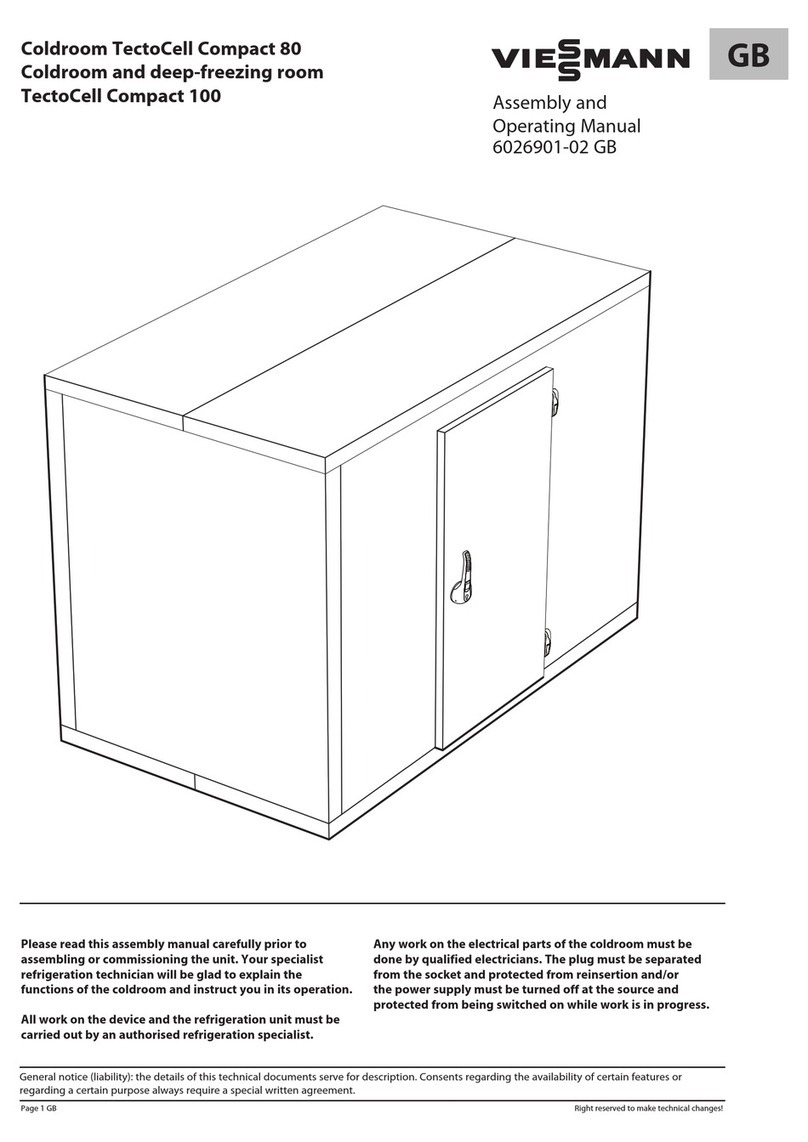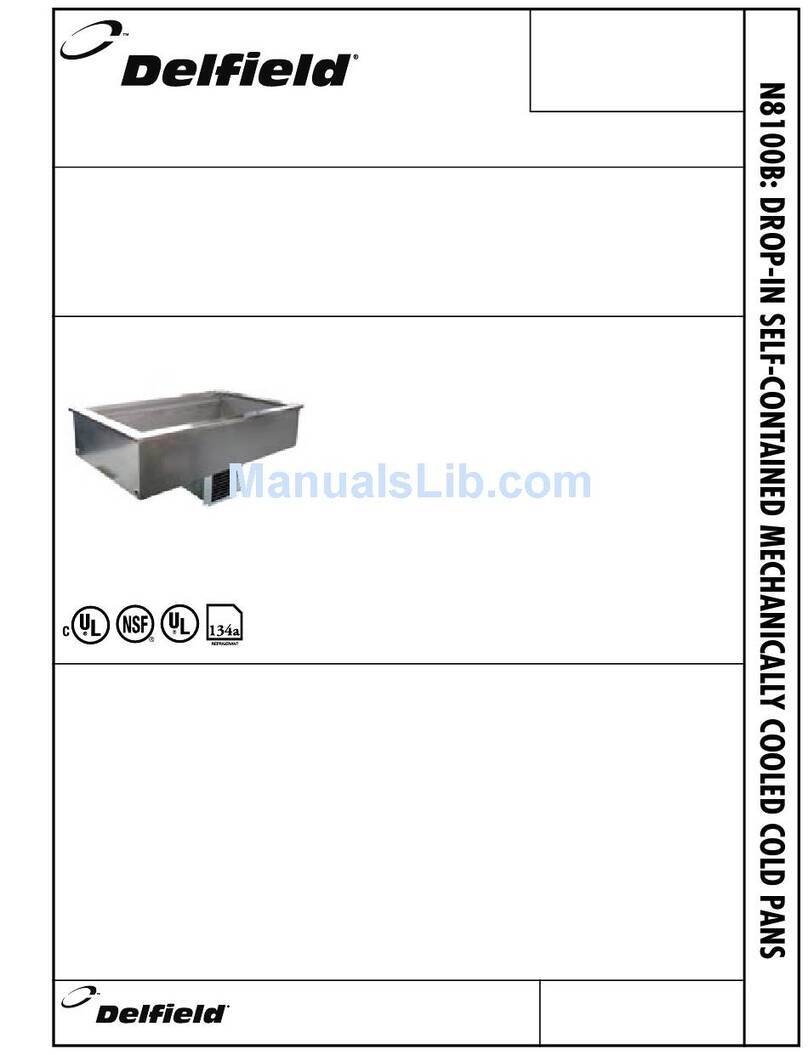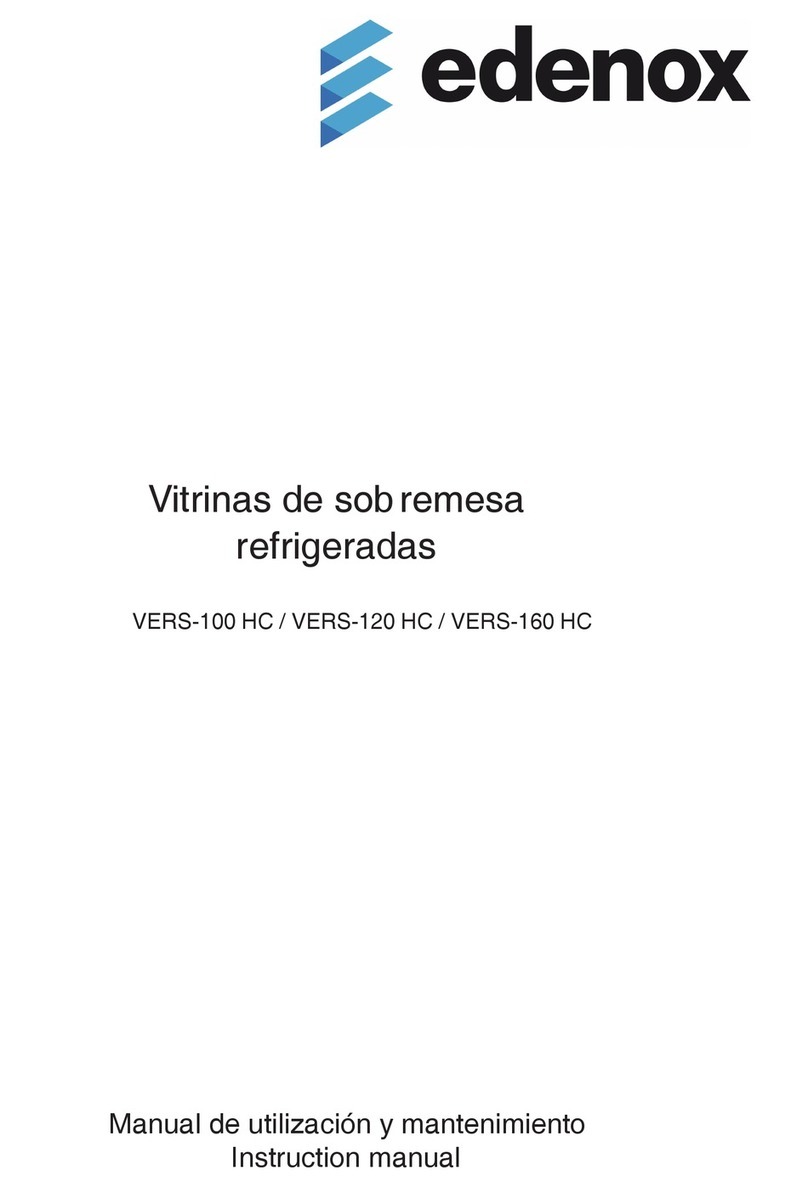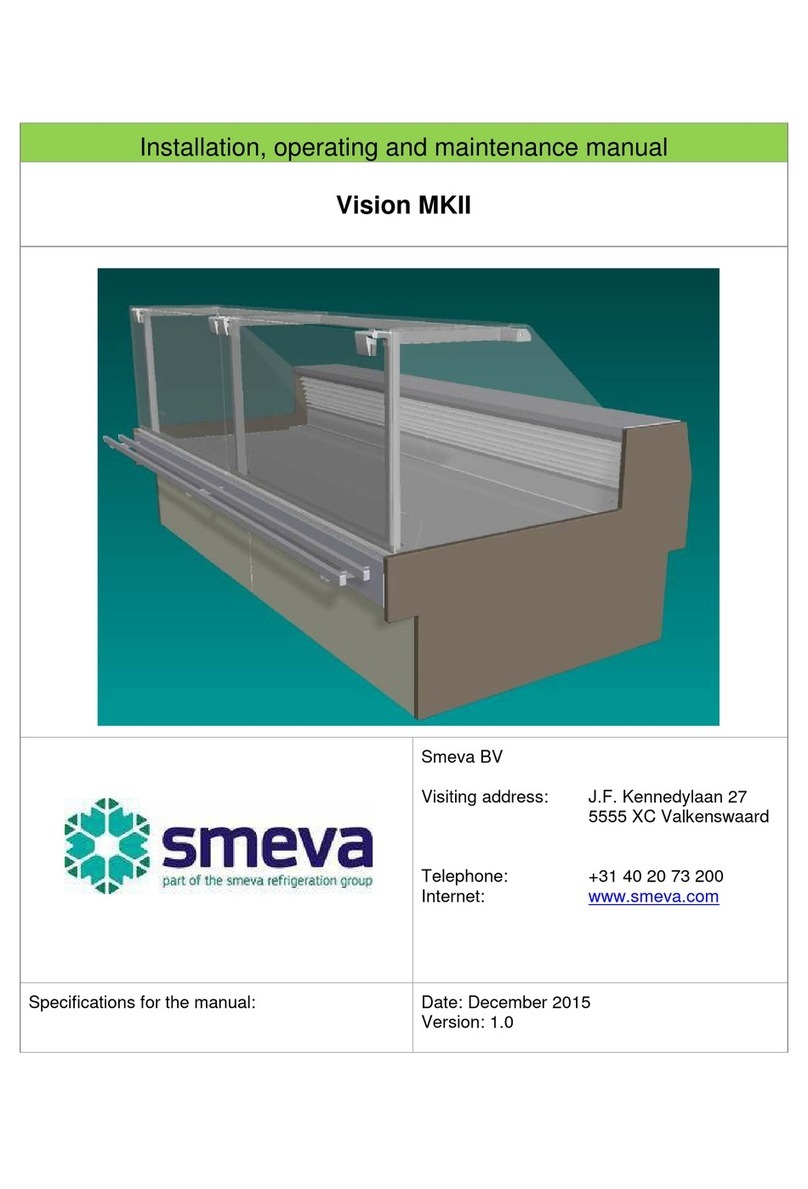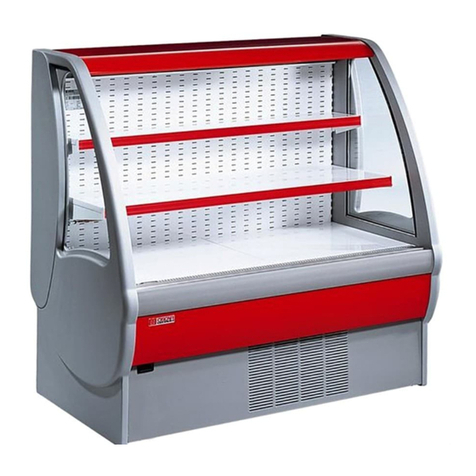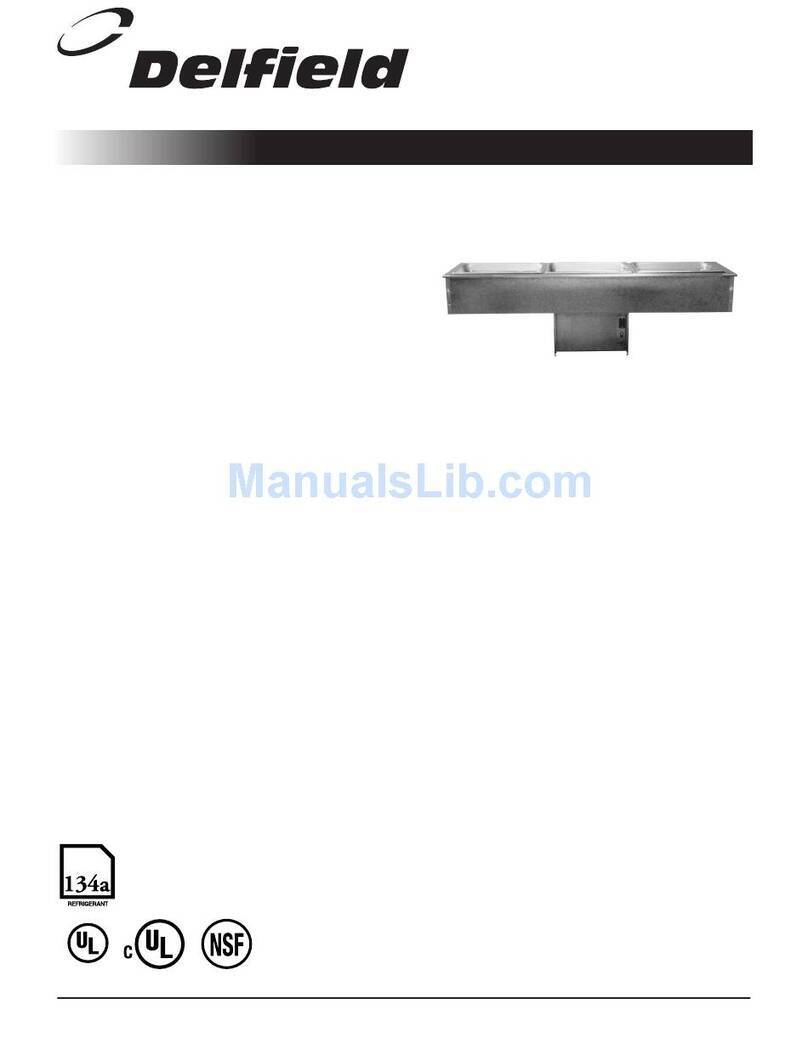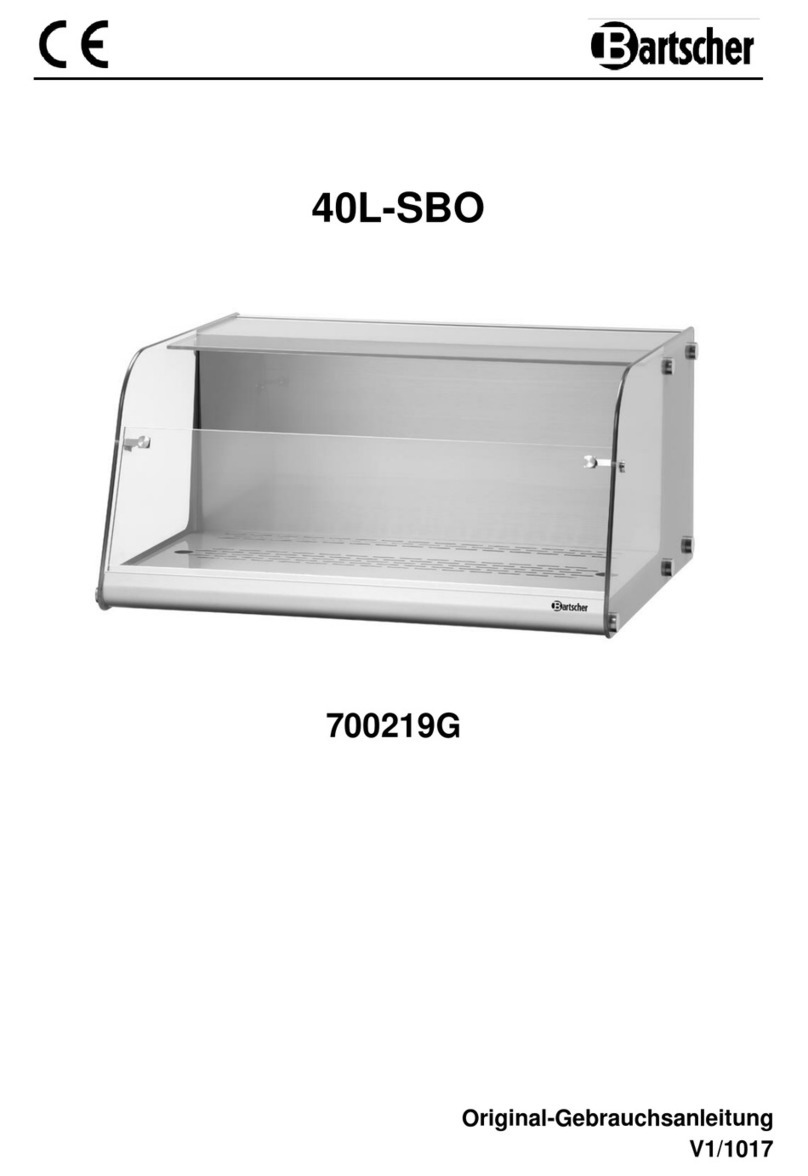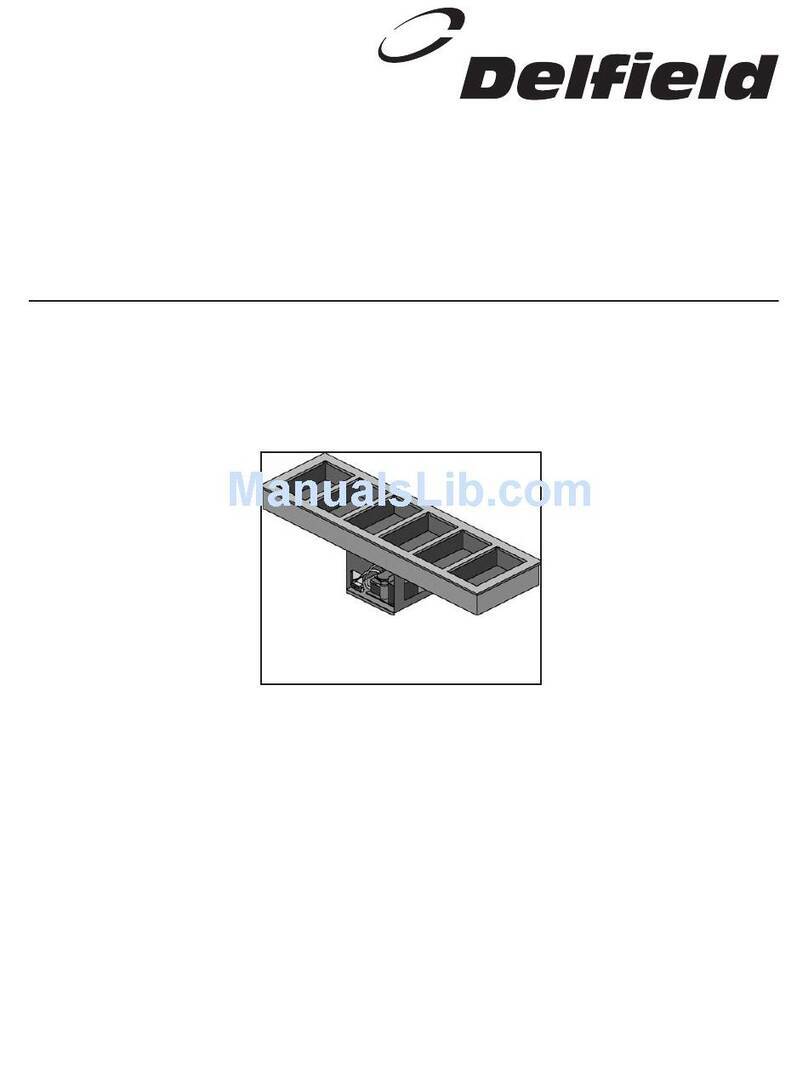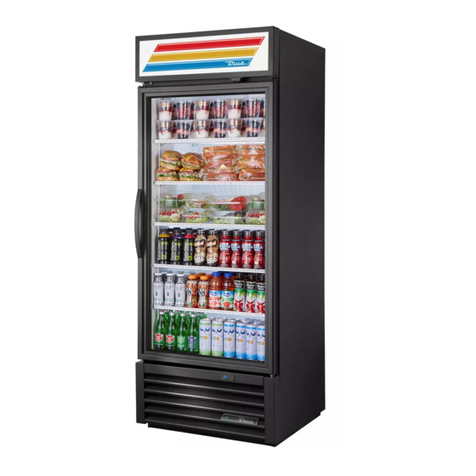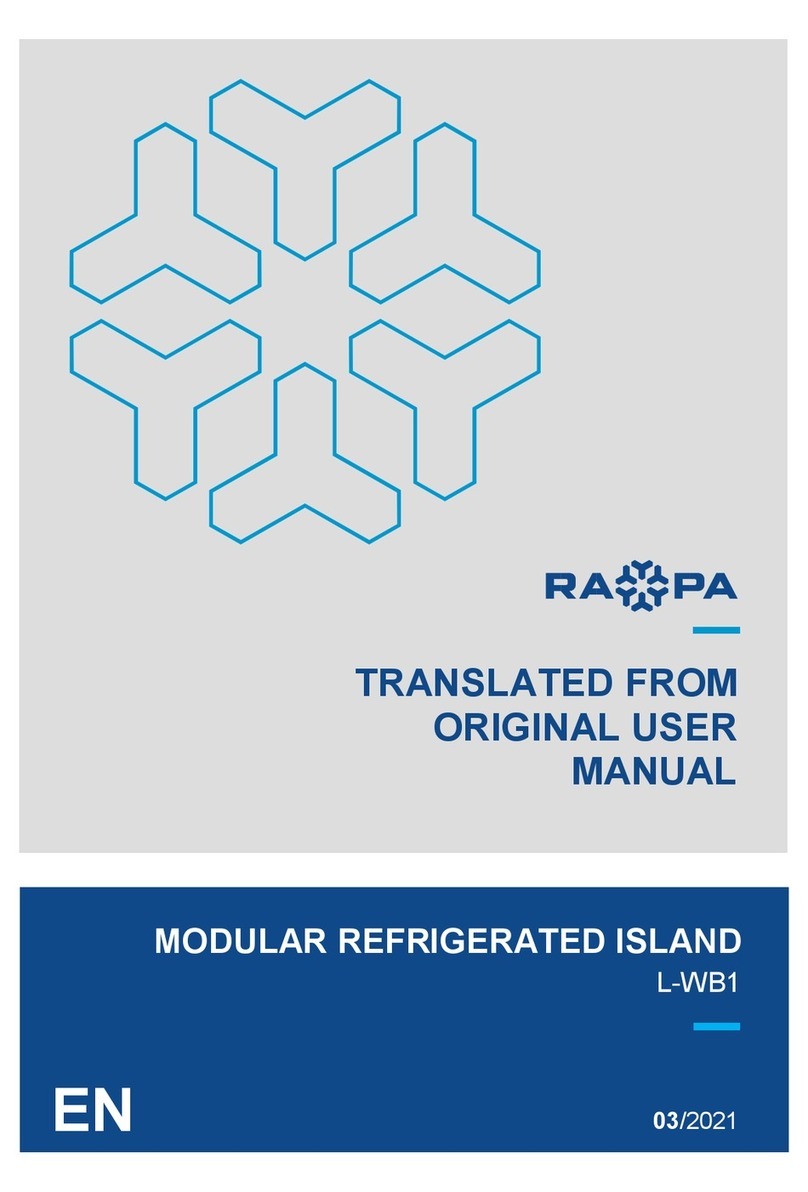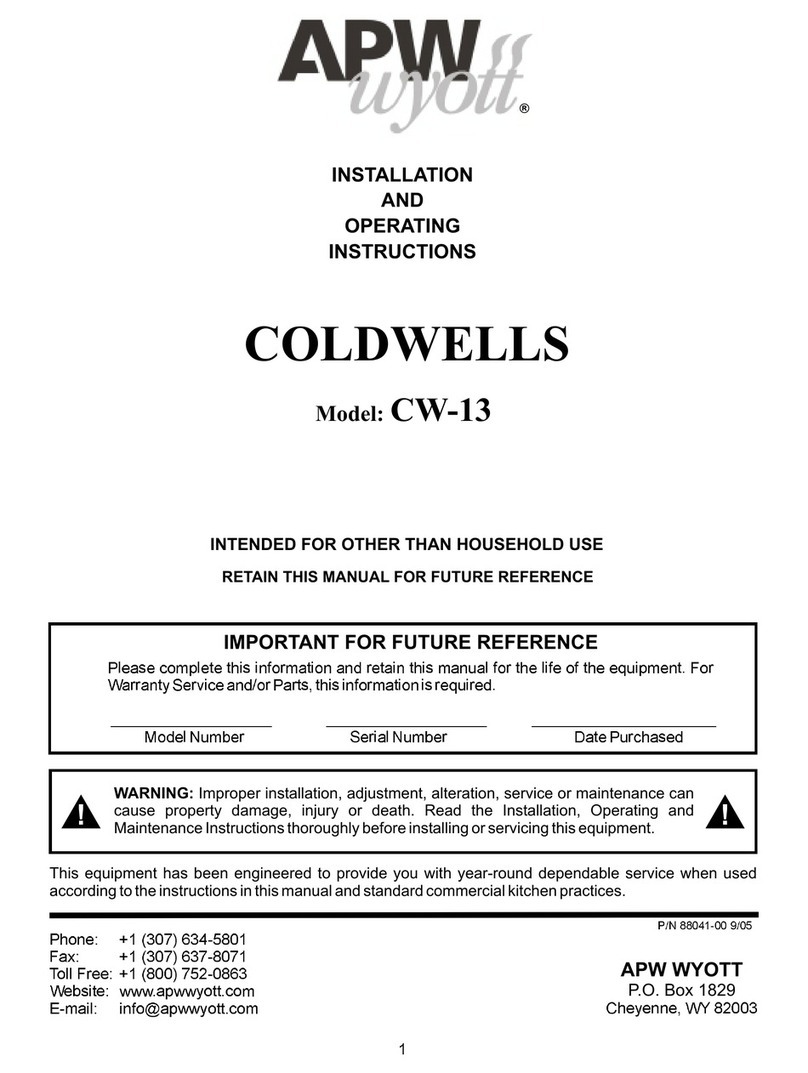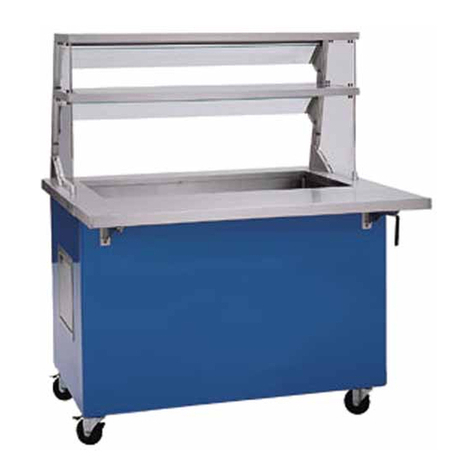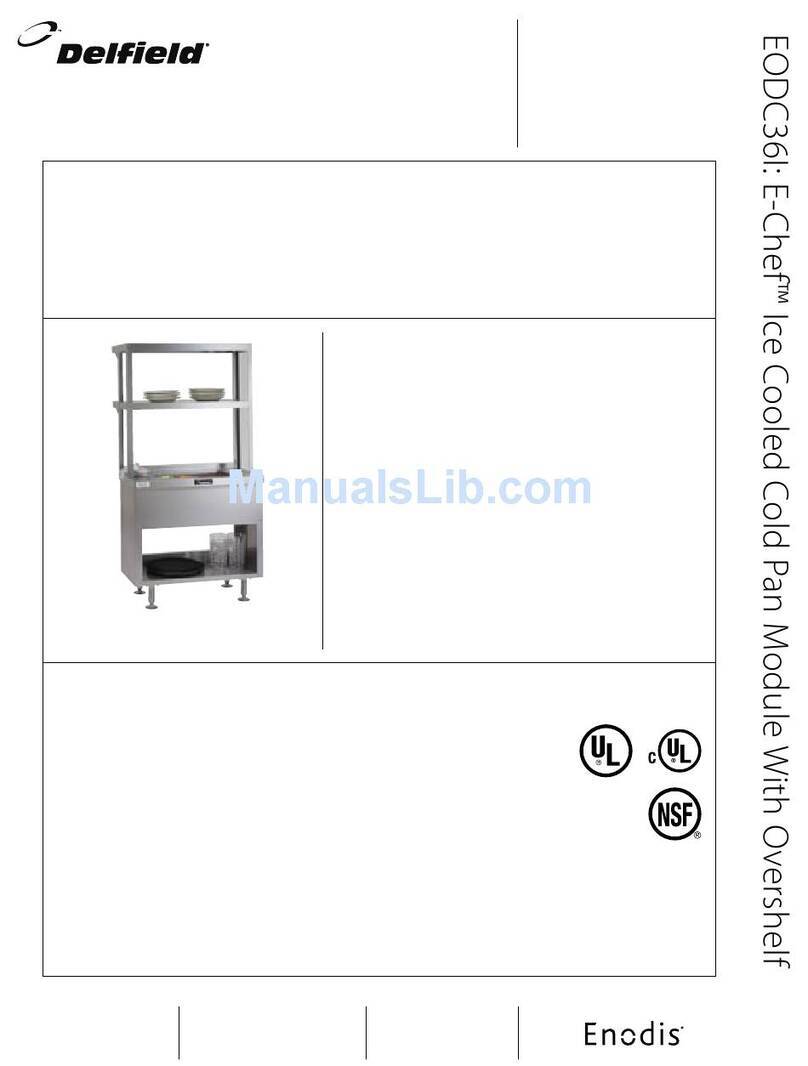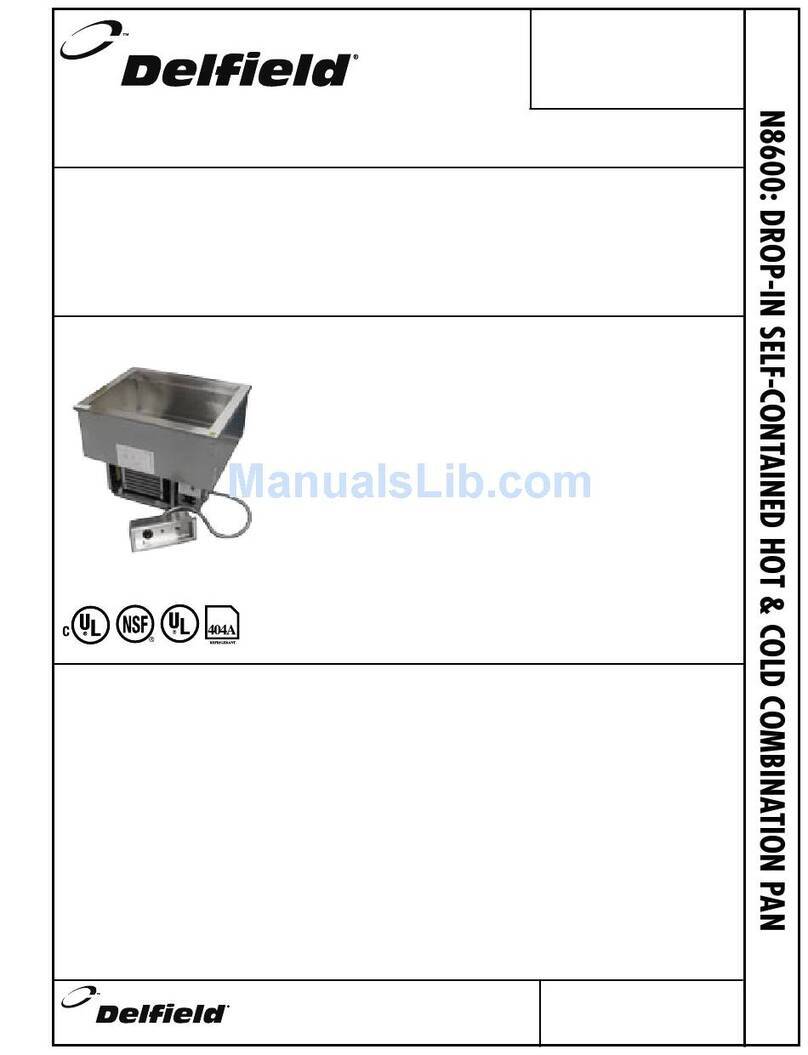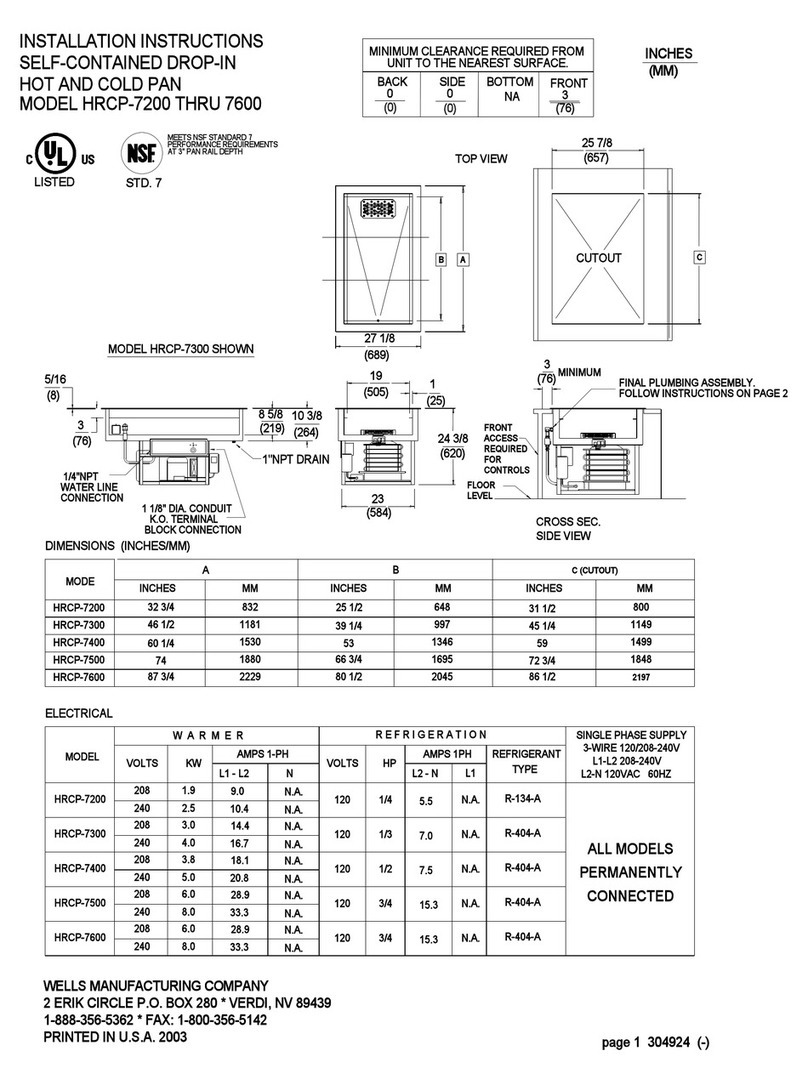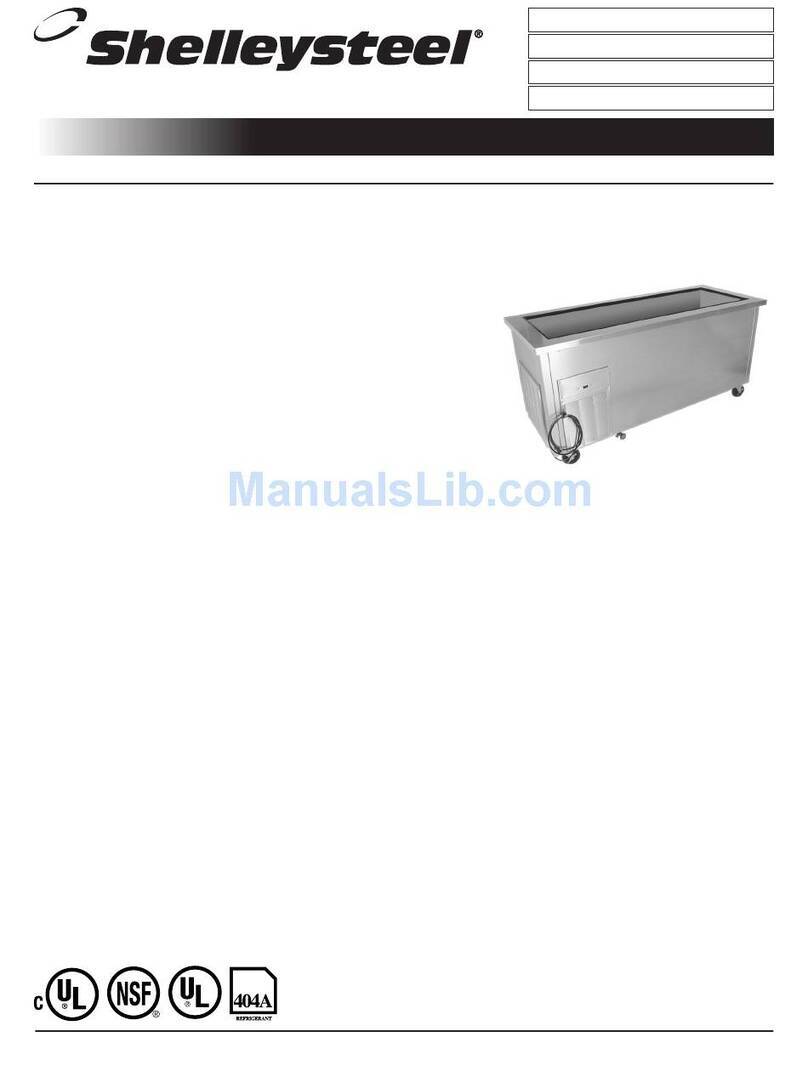
6
2 USO
La vitrina adquirida está concebida para la exposición temporal de alimentos. Le aconsejamos no
introducir alimentos o recipientes calientes, así como productos químicos, corrosivos o
medicamentos, y evitar el uso inadecuado del mueble. Para un funcionamiento seguro y
eficiente, asegúrese de seguir las siguientes instrucciones:
2.0 INSTRUCCIONES DE USO
1) No deje alimentos en la vitrina después de las horas de servicio ya que pueden secarse o
echarse a perder. Es aconsejable la desconexión de la vitrina y limpieza diaria después
de su servicio.Los alimentos que no deben resecarse durante su uso, deben ser cubiertos
o envueltos en una película de plástico.
2) Exponer solo alimentos previamente refrigerados. Se necesita más tiempo para que estos
se enfríen en la vitrina que en un refrigerador.
3) Evitar en la medida de lo posible la apertura frecuente de puertas, y sobre todo, no
dejarlas abiertas. La temperatura interior puede aumentar, lo que ayuda al deterioro de
los alimentos.
4) La temperatura ambiente no debe superar los 32ºC (25ºC para vitrinas Sushi (S)). El
rendimiento de enfriamiento puede reducirse, ayudando al deterioro de los alimentos.
2.1 PRECAUCIONES
1) Toda la superficie exterior de la vitrina esta realizada en cristal, por lo cual es necesario
tener precaución a la hora de colocar elementos sobre ella, evitando en la medida de lo
posible los golpes (peligro de rotura del cristal).
2) En caso de avería, no está permitido acercarse a la vitrina descalzo, con el suelo mojado
o con las manos húmedas.
3 MANTENIMIENTO
En este punto trataremos sobre la limpieza que usted puede realizar así como un breve chequeo
de la máquina antes de avisar al servicio técnico. Esperamos que le sea útil.
3.0 LIMPIEZA A REALIZAR POR EL USUARIO
Antes de realizar cualquier operación de limpieza, hay que proceder a desconectar el aparato de
la toma de corriente, y colocar el interruptor general en posición OFF o 0.
Las vitrinas van provistas de desagüe para facilitar su limpieza, así como la eventual salida de
líquidos procedentes de los alimentos. Durante la operación de limpieza es imprescindible quitar
el tapón del desagüe y limpiar éste, para evitar la obstrucción por arrastre de elementos sólidos.
Se pretende que los líquidos que pueda haber no se estanquen.
3.1 CHEQUEO DE LA MÁQUINA
En caso de que tenga que solicitar la intervención del técnico puede realizar un chequeo de la
vitrina antes de llamarlo. En algunos casos los fallos de funcionamiento que pueden surgir, son
por causas simples que el propio usuario puede solucionar.
A modo de ejemplos podemos citar algunos:
a) La vitrina no funciona
Comprobar que llega corriente a la vitrina observando que el interruptor general está
encendido.
b) En caso de temperatura insuficiente
Comprobar que no existe cerca una fuente de calor y que no está taponada la salida de aire
del condensador.
